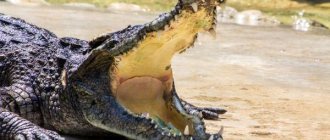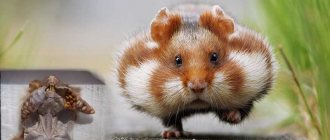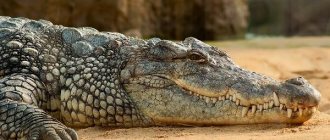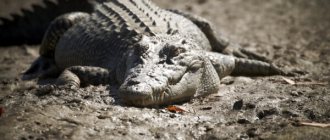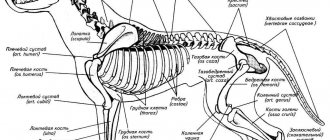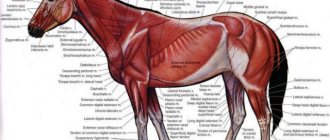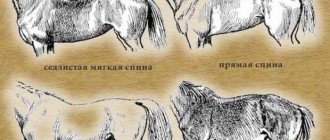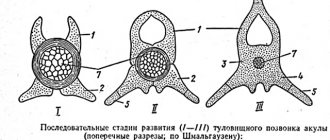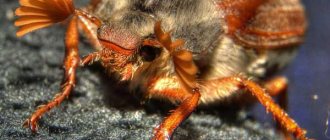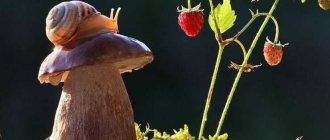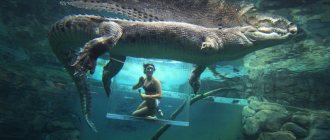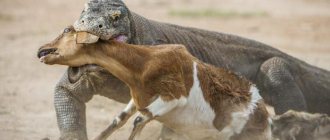Crocodiles are sometimes rightly called the dinosaurs that miraculously survived on Earth. They are one of the most dangerous predators. They belong to the chordates. Class of reptiles. Semi-aquatic wild animal. It looks as slow as a turtle. But when attacking a victim, it can surprise with unprecedented agility and dexterity. Crocodiles are reptiles. This family includes alligators, caimans and Nile crocodiles.
In this article you will find a description of the crocodile skeleton, general information about these animals, interesting facts from their life and more.
You may be interested in:Map of the British Empire in the 19th century
Meet the crocodile
Crocodiles appeared more than 250 million years ago. Over this long period, scientists have not noted significant changes in the appearance of animals of this species. The only thing is that the ancestors of today’s crocodiles were much larger. They reached thirteen to fourteen meters in length. Due to this constant similarity with their ancestors, crocodiles are considered unique creatures that allow us to optimize our ideas about the animal world that existed many millennia ago.
These are the largest reptiles on Earth. They live in the tropics and subtropics:
- America;
- Africa (the continent where the largest representative of the species, the Nile crocodile, lives);
- Asia;
- Oceania (habitat of the most mysterious saltwater crocodiles).
You may be interested in: The concept of a triangular prism. Surface area and volume of a figure
The skeleton of a crocodile consists of bony elements and is somewhat similar to the skeleton of a lizard. Its entire body is covered with horny scales, under which there is a shell in the area of the back and surface of the tail. Which, in turn, consists of osteoderms. These are bone plates. On the head they merge with the skull. These plates are elastically connected to each other. These two facts explain why the “armored coating” does not interfere with the graceful and dexterous movement of animals and the very rapid change of body position both in water and on land.
Together, the bone plates and their connection create a kind of “armor” in which the crocodile’s body is located. Its “pattern,” including color, is different for each species and is a distinctive feature. The functions of such “armor” are obvious. This is an effective protection of the entire body, internal organs, and brain from various types of influences during life.
Lifestyle of crocodiles
The way of life of crocodiles is unique. They spend most of their time in the water. They come ashore in pursuit of prey or to bask in the sun. The main propulsion device in water for a crocodile is its tail. Acting with its tail like a huge oar, a crocodile can reach speeds of up to 30-35 km/h in the water. The tail also acts as a rudder, so both afloat and underwater the crocodile can abruptly change the direction of movement. On land, these reptiles are slow and rather clumsy, but when attacked they make very fast attacks. In the normal position, the crocodile’s legs are spread wide apart, but when running, it carries them under the body and can, changing to a gallop, cover short distances at speeds of up to 18 km/h.
According to scientists, the ancestors of crocodiles mainly lived on land and only went into the water when necessary. Therefore, they retained the ability to reproduce on land. Spending most of their lives in water, they lay eggs on land. Their ability to reproduce appears at 8-10 years of age. At this time, their length reaches about 2.5 meters in males, and up to 1.7 meters in females. The breeding season for southern species is in winter; northern crocodiles lay eggs in autumn.
Crocodiles communicate with each other in a voice similar to either a dog barking or a roar. With the onset of the mating season, the habitats of crocodiles are filled with their heart-rending roars, which means scaring away rivals and calling for females. Usually, during breeding, males show wild aggression among themselves, organizing fights to the death. To attract females, males, in addition to screams, create noise by splashing their muzzles on the water. Having dealt with their rivals, the couple retires and spends time together. The female builds a nest in the shallows near the water. To do this, she digs a hole up to half a meter deep, covers it with leaves, branches, dirt or sand and lays from two to eight dozen eggs. When the clutch is ready, the female covers the nest with the same materials. In places with lush vegetation, nests are made entirely of branches and leaves, covering them with mud to retain heat.
Both parents take care of the safety of the clutch, staying nearby and protecting their future offspring from the encroachment of uninvited guests. And still, no more than 20% of the eggs are preserved in the clutch, because crocodiles’ nests are destroyed by other predators or people while the parents are away.
After three months, small crocodiles hatch from the eggs. At the same time, they squeak quite loudly, attracting the attention of the mother who, hearing these sounds, digs up the nest. If one of the crocodiles is unable to break the egg shell, the female helps them by carefully crushing the eggs with her tongue and palate, helping the cubs get out. These reptiles have another property inaccessible to other animals, which is that the sex of the future crocodile can be determined by the method of thermoregulation. If incubation takes place at a temperature of 32-33°C, approximately the same number of males and females are born. If the temperature is higher, there will be more males; if it is lower, there will be more females.
The cubs are quite small, the largest of the Nile crocodile are about 30 cm long. The babies themselves cannot get from the nest to the water, and therefore the mother takes several of them into her mouth and carries them to the water, where they can immediately swim. At first they grow very quickly. They feed on everything they can grab: mollusks, worms, bugs, blades of grass, fish fry and frog tadpoles. The crocodile takes care of her cubs for up to two years. During this time, there are very few of them left, but those that survive grow up to one meter in length and can already get by on their own.
Crocodiles are dangerous to humans to varying degrees. Some, such as the gharial, never attack people, others, like the saltwater and Nile crocodiles, will never refuse to attack if the opportunity presents itself. Well, such as the black caiman or the sharp-snouted crocodile attack quite rarely, mainly if they are provoked by the person himself or they are very hungry.
For many tribes in Africa, Indochina and Australia, crocodiles have been revered animals from time immemorial. And in the ancient cultures of these peoples, the crocodile was even considered a sacred animal. The ancient Egyptians considered the god Sebek, who was depicted as a man with a crocodile head, to be the patron of fishermen, who controlled the floods of the Nile, the main river of Egypt. Sebek, as the personification of strength and dexterity, was especially revered by hunters. Even the pharaohs turned to Sebek for blessings for good luck before battles with enemies. They believed that Sebek was a messenger of the god Ra, who arose from a stone.
Pharaoh Amenemhet III, on the site of present-day Kiman Faris, built the entire city of Shedit, which the ancient Greeks called Crocodilopolis, in which a temple was erected in honor of the crocodile god Sebek, and a huge labyrinth of 3000 rooms in which, according to Herodotus’ description, the priests kept a sacred crocodile decorated gold and diamonds as the earthly incarnation of Sebek.
How long this lasted is not known, but judging by the fact that after death, these sacred crocodiles, like priests and pharaohs, were mummified, and in Kom el-Breighat alone there is a cemetery where almost two thousand crocodile mummies were discovered; they were deified for more than one thousand years. Moreover, nearby are the remains of the pyramid of Amenemhat III himself.
Currently, in the natural environment, only a few live to a respectable age, and not because they develop some kind of disease, but because they are caught, killed and transferred to skin and meat. In many national cuisines, crocodile meat is considered a delicacy. In addition, due to the great demand for leather, there have been farms for their breeding in many countries for several decades. Crocodiles breed well in captivity, but they are not kept there for a long time; one and a half to two meters is enough to get a significant benefit.
As we have already mentioned, about two dozen different crocodiles now live on earth. Here are the main most common types.
Features of the crocodile skeleton
You will be interested in: Absheron Regiment: history of creation, participation in battles, description of uniforms
Crocodiles are vertebrates that prefer to live most of their time in water. The animal’s favorite position, which gives it maximum comfort, is with its body almost completely submerged in water. Only a pair of eyes and nostrils remain on the surface of the water, which constitute the sensory apparatus of crocodiles. This position allows you to hide the real size of the animal.
The skeleton of a crocodile has its own characteristics.
- A very large head with a flattened dorsal region.
- The skull consists of more than thirty bones.
- The elongated muzzle with elongated upper and lower jaws ends in raised, convex nostrils.
- The limbs are moved to the sides of the body and have five (front) and four (back) fingers. Three of them end in sharp and powerful claws from the inside.
- A long tail.
- The spine is divided into sections - cervical, thoracic, lumbar, caudal and sacral - and has from sixty to seventy vertebrae.
The study of the structure of the crocodile by specialists from different countries does not stop. More and more new facts are emerging. For example, the recent discovery of an additional joint in the jaw apparatus of reptiles provides an explanation for the peculiarities of their closure when catching prey, which is called the “death grip”.
Origin of crocodiles
The history of the origin of crocodiles dates back to 200 million years ago.
This was the end of the era of lizards. Their paws then were somewhat longer than those of today, and their muzzles were short. But unlike today's crocodiles, which prefer water more, those individuals lived on land. Archosaur
Crocodiles are representatives of archosaurs, the only ones that have survived to this day. Over millions of years, they have hardly changed in appearance. These are highly developed reptiles. Externally they look like a lizard. The color is greenish-brown. The weight of an adult crocodile is 500-600 kg. Body length 3-8 meters. An elongated muzzle that allows you to deftly grab prey and hold it tightly. Highly developed brain. Excellent memory. Eyes with narrow pupils protrude above the level of the head.
Description
The skeletal structure of a crocodile is very similar to that of a lizard. The skeleton of the animal consists of a skull, five sections of the spine and bones of the limbs. The way the animal’s body is structured speaks about the historical method of adaptation to life in water. Elongated and flattened body. Long, flexible tail. Short paws located on both sides of the body. Membranes that connect the fingers of crocodiles to each other.
The skeleton of a crocodile is represented by the following components:
- Skull bones. Lower and upper jaws with teeth.
- Cervical, thoracic, lumbar, sacral, caudal sections.
- Femur.
- Leg bones: tibia and fibula.
- Forelimb: ankle and metatarsus (the bone that forms the part of the foot between the ankle and toes).
- Phalanx: Each of the small bones that form the fingers.
- Shoulder.
- Spatula.
- Bones of the forearm.
- Rib: Each of the bones that form the rib cage.
This photo of a crocodile skeleton clearly shows the sacral vertebrae and their articulation with the femurs on one side and the sacral bones on the other.
You might be interested in:What is trash: the answer is hidden in history
The perfection of the musculoskeletal, nervous, circulatory and respiratory systems allows us to consider these animals the most highly organized of all living reptiles.
Structural features of a crocodile
The appearance of the predator demonstrates its high adaptability to the aquatic habitat. The crocodile has a head flattened above and below, an elongated and pointed muzzle. This reduces friction with the water and increases swimming speed. The body with thick skin and horny scutes ends in a long strong tail, also flattened, but narrower on the sides. This shape is needed for more efficient strokes, because the tail is the main engine during underwater movements. The short legs are equipped with five toes on the forelimbs and four on the hind limbs. On land they are spread out and create a deceptive impression of awkwardness and clumsiness. The predator reaches 5.5 meters in length.
An interesting feature of the crocodile’s structure is the presence of salt-discharging glands in the eyes. They work in the same way as similar human organs. This is where the expression “crocodile tears” came from.
Due to their similar appearance, these reptiles are often confused with alligators, which are actually a different family, although they belong to the same order as crocodiles. The latter are better developed, and the easiest way to distinguish them is by their protruding teeth, which are covered in alligators. And also the muzzles of crocodiles are more pointed, their color is lighter, and their heads are raised a little higher.
Jaws and teeth
The description of the bones of the crocodile skeleton should begin with a description of the animal’s dentofacial system. Reptile jaws are designed to capture and hold prey. The teeth are conical in shape and serve to penetrate and hold prey rather than cutting or chewing. The teeth of the upper and lower jaws touch perfectly when they are closed. This is one explanation for the fact that when captured, they firmly hold the victim, creating the notorious “death grip”.
Teeth are often lost, but underneath each one there is a replacement ready to fill the vacancy. Teeth change approximately every twenty months throughout life. This process slows down slightly as the animal ages and may stop altogether in the oldest and largest individuals. The number of teeth varies from sixty to one hundred and ten in different species.
The muscles that close the jaws are capable of generating enormous force. They easily crush a turtle's shell. They can easily crush a pig's skull. But the muscles that open the jaws have less strength. So, a rubber strip around the mouth of a two-meter crocodile is enough to prevent it from opening its mouth. Conversely, two strong people, equipped with different levers, can hardly open the mouth of a crocodile more than one meter long.
Although crocodile jaws have enormous strength, they are also capable of being delicate and gentle. Large adults collect and roll the unshelled eggs between their jaws, squeezing them gently until the crocodiles hatch. Females of most species carry newly born young to water in their mouths.
The most dangerous crocodile
The Nile crocodile, reaching a length of more than 5 m, is considered one of the most dangerous predators of its family.
The number of its victims per year is about 100 people, and the prey is fishermen, divers and people who come to the river to wash clothes or for water.
The famous man-eating crocodile nicknamed Gustav belonged to this class. There are about 300 victims on his account.
The saltwater crocodile, which has a body length of 7 m and weighs more than a ton, kills approximately 500 people a year. But this data is unreliable, because according to some sources his victims number 50 people, and according to others - 2550.
Structure of the nasal disc and palatine valve
The animal's head "begins" from the nasal disc at the tip of the upper jaw. It contains two nostrils, each with a safety valve at its opening. They lead into canals that pass through the bone of the mouth and open into the back of the throat. Along these channels there are chambers with receptors that distinguish odors. Crocodiles have a very good sense of smell.
The second way of breathing is through the mouth. At the back of the throat is the palatine valve, which opens or closes reflexively. When an animal basks on the ground with its mouth open, breathing is carried out mainly through the mouth (the palatine valve is open). When in water, the mouth is usually closed and the crocodile breathes mainly through the nostrils. If prey is held in water, the mouth may be open but the palatal valve is closed.
What do crocodiles eat?
Hunting crocodiles
Crocodiles hunt around the clock. A common food on their “menu” is fish. Many invertebrates and land animals are also eaten. They attack any animals they can handle. There are cases when a crocodile can eat another, smaller crocodile. Crocodiles can bury food in reserve. More than 50% of his food goes into fat. This saves them during long periods of famine. By the way, he can live without food for a whole year.
Sensory pits
The peculiarity of the crocodile skull is that it is represented by the left and right temporal arches and is very reminiscent of the skull of ancient animals - dinosaurs. The eyes, ears and nostrils are located close to the top of the head.
Speaking about the exoskeleton of a crocodile, it is worth mentioning the scales that cover the animal’s head. They are very thin compared to the scales of the rest of the body and have prominent sensory pits. The latter contain bundles of nerve endings and are involved in detecting movement or vibration in water.
Who are crocodiles
Crocodiles are huge, several meters in size, possessing incredible strength and very bloodthirsty reptiles that appeared on our earth at the same time as dinosaurs. They are direct descendants of ancient archosaurs who lived back in the Mesozoic era. This family connection is still reminiscent of the appearance of the crocodile, its lifestyle, method of obtaining food and habits.
Exoskeleton
The "external skeleton" of crocodiles consists of a network of interconnected scales or scutes of various shapes and sizes. On the ventral surface they tend to be square and flat. On the sides and on the neck - round, with a raised center. Along the posterior and upper surfaces of the tail, the scales are raised very clearly.
The bony formations are part of the crocodile's skeleton, which consists of discrete and isolated blocks called "osteoderms". Their relief is most pronounced along the back. Provided with a rich blood supply. The extent to which they are deposited in the ventral part of the body varies between species and within a species from different subspecies.
The bony scales along the back are "armor". Some species are considered more heavily armored than others. This difference greatly affects the ability to protect delicate internal organs from injury during fights with other crocodiles. Therefore, teeth marks on them are a fairly common occurrence.
The vertical scales along the tail (scutes) are hardened. They significantly increase the surface area of the tail and play a role in swimming efficiency. They have good blood supply. They are places of heat exchange between the animal and the environment.
What crocodiles live in Russia?
Any representatives of these reptiles cannot exist in Eastern Europe. The climate of Russia does not satisfy the needs of reptiles, since a comfortable temperature for their stay here should exceed +11°C.
For the proper development of crocodile eggs, special conditions are required; the ambient temperature should be +25°C for 3 months. This is impossible to achieve with the local climate, so representatives do not live in the indicated territory.
Spine
The axial skeleton of the crocodile is represented by a very mobile and durable spine. It is this that allows the reptile to cope with fairly high loads when moving and fighting for survival. With the exception of some marine genera, all crocodiles have twenty-four presacral vertebrae, two sacral vertebrae, and thirty to forty caudal vertebrae. In modern reptiles, the first nine vertebrae are cervical. The ribs are simple rods with slightly expanded heads by which they are connected to the spine.
Today there are many manuals and textbooks on zoology with the name of crocodile skeletal bones, which are quite well studied.
Can a predator breathe underwater?
If we are talking about a deep dive, then, of course, a crocodile cannot breathe while completely underwater. For normal functioning, this reptile needs oxygen extracted from the air. When diving, the animal holds its breath for the required time - usually no more than half an hour. If danger awaits outside or there is another need to remain at the bottom for a long time, then the predator reduces its activity to a minimum in order to survive without breathing for up to 3 hours.
There is another option: when the animal’s body is submerged, and the edge of the muzzle with nostrils is on the surface. This is achieved by opening the mouth. Water is drawn into the oral cavity, but the reptile’s respiratory organs are designed in such a way that it is able to inhale through the nostrils even with a mouth full of water. No mammal or bird can do this.
Limbs
All modern crocodiles are four-legged and on land have a wide, spreading stance. They have three methods of terrestrial locomotion: crawling on their stomachs, walking with their body raised above the ground, and jumping. An adult crocodile can reach quite high speeds both when crawling and when jumping. In the hind limbs of reptiles, a sufficiently developed calcaneal tubercle becomes particularly important. It becomes a powerful lever for plantar flexion. It is this fact that allows crocodiles to walk on the surface without lowering their body to the ground. And this method of movement characterizes mammals.
You may be interested in: Offspring - what is it?
General characteristics of the alligator squad
The second most common type. Includes 8 representatives. Includes the following types:
American (or Mississippi) alligator. It is considered a very large species of the alligator order. The average body length of males varies around 4 meters. Features strong jaws. Lives on the southern side of America.
Chinese alligator. A unique view in China. In size it reaches a maximum length of 2 meters. An extremely small representative. The population numbers only 200 alligators.
Black caiman. In terms of its dimensions, it shares first place with the American representative. The body length of this alligator can reach 6 meters. Popular in Latin America. Attacks on humans have been recorded.
Crocodile (or spectacled) caiman. Medium-sized representative. The body length reaches no more than 2.5 meters. Other alligators are more popular, spreading from Belize and Guatemala to Peru and Mexico.
Broad-faced caiman. Quite a large species. Its size ranges from 3 to 3.5 meters. Inhabited the territory of Argentina.
Paraguayan (or Yacar) caiman. An extremely small representative. Occupies the southern range of Brazil and northern Argentina. Less common in Paraguay and the southern side of Bolivia.
Cuvier's dwarf (or smooth-faced) caiman. The body length of this caiman does not exceed 1.6 meters, which is quite small in comparison with its relatives. It is considered the smallest representative of the entire squad. The species lives in Brazil, Paraguay, Peru, Ecuador and Guyana. The French naturalist Cuvier first discovered this species in 1807.
Schneider's smooth-faced (or dwarf) caiman. This species is slightly larger than Cuvier's caiman. Its size can reach 2.3 meters. The distribution area extends from Venezuela to southern Brazil.
Tail
The skeleton of a crocodile includes a very powerful caudal section, depending on the species, consisting of thirty to forty vertebrae. During swimming, the tail is the main tool used, since the limbs are quite passive in this process. Despite their apparent bulk on land, crocodiles are very skilled swimmers and can move at great speed when necessary. The strength and ability of the animal's tail are such that crocodiles, when hunting, are able to jump out of the water and stay above its surface to catch prey. From the outside it seems that the reptile seems to be standing on the water while jumping after the victim.
Interesting fact: it only takes a crocodile two hundred milliseconds to jump out of the water and grab its prey. For comparison: a person blinks twice as slow.
The tail, one might say, “ends” with the skeleton of the crocodile - a photo of this part of the spine is below.
It is an additional weapon when hunting both on land and in water. The ability of crocodiles to remain motionless for a long time and the fact that their tail can be confused with snags (or other objects) dulls the vigilance of potential prey. And the reptile can unexpectedly use it to stun the victim.
In which country is the crocodile a sacred animal?
Despite the potential danger of these bloodthirsty predators, people have admired and revered them since ancient times.
The inhabitants of Ancient Egypt built sanctuaries in honor of this animal, namely the crocodile god Sebek.
Ancient tribes and peoples believed that great leaders were reborn into crocodiles after death. In tombs, archaeologists also discover embalmed remains of these reptiles.
Hearing organ
It is believed that crocodiles have the most developed hearing organ of all reptiles. In terms of importance for life and safety, it is in second place after vision.
The crocodile skull contains a fairly anatomically shaped, slit-like external auditory canal. Its end is closed with a valve. This occurs when the animal is completely immersed in water.
The right middle ear is connected to the left and to the pharynx through a complex system of accessory cavities. They open into the tympanic cavities. The inner ear has a cochlea. The same as in birds, but completely absent in other reptiles. Based on this fact, it can be argued that the hearing of crocodiles is similar to the hearing of birds.
What is the biggest crocodile?
The largest representative is considered to be a saltwater crocodile named Cassius Clay (currently living in captivity). It is named after the popular boxer Muhammad Ali.
The individual has a body length of almost 6 m and weighs a ton. It came to people in 2011 when it was caught in Australia. The previous record holder (of the same species) was 6.2 m long.
Crocodile skin
Crocodiles prefer to live in water most of their lives. Perhaps this saved them from death during the period of global cooling on Earth many hundreds of thousands of years ago. But it doesn’t save us from extinction in our time. The pursuit of their expensive leather, which is used in the manufacture of luxury products: handbags, shoes, belts, etc. - one of the reasons why the number of animals on Earth is declining.
The entire skin of crocodiles is divided into sensitive and insensitive areas. The most sensitive is located under the belly or on the sides of the animal. For the sake of this small piece of raw material measuring forty-five to forty-seven centimeters, an entire crocodile is destroyed.
Since the fifties of the last century, farms began to be created where animals are specially raised to obtain raw materials for the haberdashery industry. But so far this does not save crocodiles from destruction for the purpose of profit.
Environmental changes are also not the last factor influencing the decline in the populations of various species of crocodiles.
Species of crocodiles
The combed crocodile , in Latin Crocodylus porosus, is the largest of all existing ones. Otherwise called: sea, salty, Indo-Pacific, saltwater and even man-eating crocodile. This monster can be up to 7 meters or more in length, and weigh up to 2 tons. On its snout, from the edge of its eyes, there are 2 bony, comb-like protrusions, which is why it got its name. Typically, the saltwater crocodile is brownish in color with dark spots and stripes on the body and tail. It lives in sea lagoons and in the mouths of rivers flowing into the ocean, along the coasts of India, Indochina, Japan, Indonesia, Australia, and the Philippines. Often found in the open sea far from the coast. It feeds on any prey that it manages to catch. In the water these are fish, turtles, dolphins, sharks, stingrays and other aquatic inhabitants. On land, these are animals going to water: antelope, buffalo, wild boar, kangaroos, bears, monkeys and domestic sheep, goats, pigs, dogs, cows, horses and of course waterfowl. He will not miss the moment to attack a person who is within his reach.
The Nile crocodile , or Crocodylus niloticus in Latin, is the second largest crocodile after the saltwater crocodile. On average, these African crocodiles range in length from 4.5 to 5.5 meters and weigh about 1 ton. Their color is mostly gray or light brown, with dark stripes on the back and tail. This is the most ferocious of all species, not taking into account any other animals even significantly larger than it in size. This animal alone is not afraid to attack a buffalo, hippopotamus, rhinoceros, giraffe, lion or even an elephant, from a fight with which it almost always emerges victorious.
The marsh crocodile is Crocodylus palustris, also known as the Indian crocodile or magher. The marsh crocodile is also very large, up to 5 meters long and weighing on average about 500 kg. The color is dark green, marsh color. With its wide snout it looks like an alligator. Mager, translated from Hindi, means “water monster,” although Indian fishermen call it a robber, because these crocodiles steal fish, and when the opportunity arises, they attack the fishermen themselves. It lives in India and neighboring countries along the banks of rivers and lakes, and in swampy jungles. During times of drought, mageras burrow into the swamp mud and hibernate until the monsoon season begins. On the island of Ceylon there is a species of this crocodile called the Kimbula. The Ceylon crocodile can live in salt water and prefers lagoons along the ocean. He is very aggressive and attacks people quite often.
The American sharp-snouted crocodile (Crocodylus acutus) is the most common of all species. It received this name due to the shape of its narrow, pointed muzzle. It grows up to 5 m in length and weighs up to 1000 kg. The color is usually green-brown or gray. It lives in rivers, lakes and swamps of Central America, the southern United States and northern South America. It feeds mainly on fish, waterfowl and turtles. When there is not enough food, it attacks livestock. Attacks on humans are very rare.
African narrow-snouted crocodile - Crocodylus cataphractus is quite large in size, living in swamps and tropical rivers of Western and Central Africa. The usual length is about 2.5 meters, but up to 4 meters are also found. It received this name because of its narrow muzzle. Unlike other crocodiles, the hard plates on its neck are arranged in 3-4 rows, and on its back they merge with the scales, for which it is called an armored crocodile. It feeds on fish and small aquatic inhabitants. It builds nests from plants on the shore near the water. We lay few eggs, no more than two dozen; the incubation period is longer than that of other species, often almost 4 months. The population of African narrow-snouted crocodiles is falling due to uncontrolled hunting. It is believed that there are no more than 50,000 of them left.
The Orinoco crocodile - Crocodylus intermedius in Latin - is one of the rarest species. It is similar to the American sharp-snout both in appearance and in size, the length reaches up to 5.2 m. The color is light green and gray with dark spots. The muzzle is long, like that of an African narrow-snout. It feeds mainly on fish and small animals. During drought, when the water in the rivers decreases, it hides in holes on the river banks and hibernates. For a long time it was one of the most hunted crocodiles in South America, as a result of which almost all of them were exterminated. Now there are no more than one and a half thousand individuals left. It lives mainly in Venezuela and Colombia and on nearby islands.
Australian narrow-snouted crocodile - Crocodylus johnstoni, another name for Johnston's crocodile. It is not particularly large in size, but 3 meters in length and a weight of up to 100 kg are also impressive, especially since it reaches such dimensions around the age of 25. This crocodile has strong legs with large claws and a narrow, pointed snout, from which it gets its name. The color is mostly light brown, with dark stripes appearing on the body and tail. It feeds mainly on fish, but also does not refuse amphibians and small land animals. It lives in the west and north of Australia in rivers, lakes, and swamps with fresh water, which is why it is sometimes called the freshwater crocodile.
Philippine or Mindorek crocodile - Crocodylus mindorensis got its name from its habitat, these are the Philippine Islands and in particular the islands of Mindoro, Negros, Samar, Buzuanga, Jolo, Luzon. The crocodile is relatively small in size, no more than 3 meters in length. The muzzle is quite wide, somewhat similar to the New Guinea. The color is gray with transverse darker stripes on the body and tail. Lives in fresh water bodies: lakes, ponds, lakes, swamps. Sometimes he changes his place of residence and goes to the ocean coast. Usually active at night, during the day it lies in secluded places. It feeds on fish, small invertebrates, waterfowl and small animals that come to drink. Considered a rare species, only a few hundred remain in nature and has been listed in the Red Book since 1992.
Central American crocodile , Morelet's crocodile, in Latin Crocodylus moreletii. The name itself speaks of its habitat, widespread in the countries of Central America: Mexico, Guatemala, Belize. A relatively small species, the maximum length is about 3 meters. The color is gray, sometimes gray-brown, there are dark stripes on the body and tail, the belly is lighter. The difference from other species is that its skin has fewer keratinized plates, they are located mainly on the top of the neck, the stomach does not have such protection at all, which is why it is called a soft-bellied crocodile. The population is limited, with only a few thousand left in the wild.
The New Guinea crocodile or Crocodylus novaeguineae, a fairly rare species, is currently found only on the islands of Papua New Guinea and Indonesia. This is a medium-sized crocodile, the maximum length is about 3.5, females up to 2.7 meters. Somewhat similar to its Siamese counterpart. The muzzle is narrow, slightly elongated. The color is gray with darker stripes on the body and tail. Lives only in fresh water, prefers swampy areas. This is a typical nocturnal predator, becoming more active at dusk. Food is mainly fish, birds, small animals and crustaceans and everything that can be handled. During the day he sleeps in secluded places. The skin of this species is not in particular demand, so the population is stable at around 100,000 individuals, although it is listed in the Red Book.
Cuban crocodile - Crocodylus rhombifer, medium to small in size. The usual length is up to 2.5 meters in length and weight is about 40 kg. They are also found up to 3.5 meters in length and weighing up to 200 kg. In 1880, a specimen 5.3 meters long was captured. Under natural conditions, it lives in Cuba in the swamps of the Zapata Peninsula conservation area and on the island of Isla de la Juventud. Although it is a relatively small crocodile, it is considered the most aggressive of all species. It has great agility and enormous bite force that reaches 2 thousand kilograms. It feeds on everything it can catch and handle. It attacks people very rarely, but it constantly hunts domestic animals, because although it is a semi-aquatic animal, it spends a lot of time on land. Another feature of this crocodile is the ability to jump high out of the water. It often happens that Cuban crocodiles jump out of the water and grab small animals or birds from tree branches.
Siamese crocodile - Crocodylus siamensis, a medium-sized species. The usual length is 3 meters, maximum 4 meters. The weight of males is up to 350 kg, and females no more than 150 kg. However, they sometimes interbreed with saltwater crocodiles and then the size of these hybrids can be much larger. Siamese crocodiles are a bit like saltwater crocodiles, especially the young ones. Their color is green-olive, and there are also dark green ones. They feed on fish, shellfish, reptiles, small animals and birds. Habitat of the country of Indochina: Vietnam, Thailand, Cambodia, found in Malaysia. Siamese crocodiles are an endangered species, listed in the Red Book. Now there are no more than 5 thousand of them, taking into account the fact that in Cambodia they are bred in nurseries.
African dwarf crocodile - Osteolaemus tetraspis, another name for the blunt-nosed crocodile, the smallest of all living on earth. It is only 1.5 meters long. It lives in Central and Western Africa, in tropical swamps and rivers. It feeds on fish, frogs, small reptiles, snails and even insects or carrion. This crocodile, due to its small size, is often susceptible to attack by other predators, but, compared to other species, it has good protection from ossified plates on the sides, neck and tail. Due to the inaccessibility of the regions where this species of crocodiles is located, it has been little studied. But, as far as we know, it is constantly hunted, since its skin and meat are in great demand. Although, according to the latest information, the African dwarf is not in danger of extinction.
Mississippi alligator - lat. Alligator mississippiensis, or otherwise the American alligator, is a large species of reptile from a separate family of alligators. Reaches a size of up to 4.5 m in length and a body weight of up to 400 kg. It differs from a crocodile in that it can live only in fresh water and easily tolerates cold. It lives in rivers, lakes and ponds of North America, mainly in the southern United States. It feeds on fish, turtles, reptiles, birds and small animals that live near water or come to drink: nutria, raccoons, muskrats, etc. It rarely attacks large animals and humans. For many years, Mississippi alligators have been bred on special farms for their skin and meat. Albinos of white color are often found among this species.
The Chinese alligator - Alligator sinensis is much smaller than its American counterpart. The maximum length of these reptiles is a little over 2 meters, females up to one and a half meters. It feeds on fish, shellfish, snakes, small animals, and birds. The only place where this species lives is the Yangtze River basin in China. This is a rare species, almost completely exterminated by humans. In natural conditions there are several hundred individuals. Recently, Chinese alligators have begun to be bred on special farms for commercial purposes to obtain skins and meat. These reptiles are the calmest of all types of crocodiles; they can attack a person only for the purpose of protection.
The black caiman or Melanosuchus niger is one of the largest crocodilians. The body size of a male can reach 5.5 m and weight 500 kg. and more. Like all caimans, there are bony projections on the head behind the eyes that distinguish them from true crocodiles. Lives in lakes and rivers of South America. It feeds mainly on large animals that come to water: deer, monkeys, armadillos, otters, livestock, etc. He also does not refuse fish, including the famous piranha, which he is not afraid of, thanks to his durable shell of ossified scales. It is nocturnal, fortunately it has well-developed night vision, and the dark color is a good camouflage. Rare cases of attacks on people have been recorded.
Crocodile caiman , in Latin Caiman crocodilus or spectacled caiman, is relatively small in size. The usual body length is up to 2 m and weight is about 60 kg. He has a narrow muzzle and a specific bone growth between his eyes that resembles glasses. It lives in all bodies of water in Central America, Mexico, Brazil, Colombia, Honduras, Panama, Nicaragua, Costa Rica, Dominican Guyana, Guatemala and the Bahamas. It feeds mainly on fish, crabs and shellfish. Sometimes it attacks wild boars, other caimans and even anacondas. Although quite often they themselves become victims of larger predators: black caimans, jaguars and large anacondas. The most common type of large population.
Broad-faced caiman in Latin Caiman latirostris is medium-sized, usually just over 2 meters, olive green in color and has a wide jaw, which is how it got its name. It lives in rivers and mangrove swamps on the Atlantic coast of many countries in South America, Argentina, Brazil, Uruguay, Paraguay, and Bolivia. Often found in ponds near human habitation. It feeds mainly on fish, snails, and mollusks. Adult caimans catch turtles and capybaras.
The skin of the broad-faced caiman is in great demand, so as a result of poaching in the last century, large numbers of them were exterminated. However, due to the inaccessibility of its habitats, the population has survived; it is believed that between 250,000 and 500,000 individuals of this species now exist in nature.
Paraguayan caiman - Caiman yacare, yacar or piranha caiman. It received so many names for a reason; it is the most common species of caiman and crocodiles in general. It lives everywhere in swampy places, rivers and lakes of Brazil, Argentina, Paraguay and Bolivia. Relatively small, only 2 meters in length, the Yakar caiman is very voracious, eating a lot of fish, snails, aquatic invertebrates, and when they are caught, even snakes. It will not refuse unwary birds or small animals. It was named Piranha because of the special structure of its teeth; its long lower teeth protrude above the upper jaw, sometimes forming holes in it. It is quite aggressive, but it very rarely attacks a person, and then only if provoked.
Cuvier's dwarf smooth-faced caiman - Paleosuchus palpebrosus, one of the smallest crocodiles. The length of the male is no more than two, and the length of females is one and a half meters. Weight maximum 20 kg. The peculiar shape of the head with smooth brow ridges sets it apart from a number of its fellows. However, this gives it an advantage when digging the burrows in which it lives. In addition, the streamlined shape of the skull makes it easier for him to move in the water of rivers and streams with fast currents, when chasing prey: fish, crabs, shrimp and other aquatic inhabitants of the rivers of South America. Whenever possible, it hunts small land animals and avoids humans.
Schneider's smooth-faced caiman or triangular-headed caiman - Paleosuchus trigonatus. The closest relative of Cuvier's dwarf caiman. It lives in the same areas as Cuvier's smooth-fronted caiman. Cuvier's head differs in appearance from the caiman; it has the shape of a triangle, and its muzzle is longer. The average size of males is from 1.5 to 1.7 meters, and their weight is about 15 kg; females are even smaller. Their diet, reproduction and lifestyle are the same.
The gharial or Gavialis gangeticus is the only representative of the gharial family from the order of crocodilians. The same reptile animal as a real crocodile, but with some differences. The gharial leads a mainly aquatic lifestyle; it rarely comes to land, most often only to lay eggs. This is a very large species, growing up to 6 meters in length. Usually the gharial is green-brown in color, the belly is somewhat lighter. It is distinguished from crocodiles by its narrow, long muzzle, somewhat similar to the beak of a prehistoric predator. Its long jaws, lined with teeth, are ideally suited for catching fish, which is the main diet of the gharial, although it does not refuse other marine life. Large gharials sometimes attack small coastal animals. Habitat: India, Pakistan, Bangladesh, Nepal, Myanmar. They are believed to have been completely exterminated in Bhutan. Now the gharial is considered a rare animal and is listed in the Red Book.
The gharial crocodile , Latin Tomistoma schlegelii, is the gharial's closest and only living relative. In scientific circles it is also called pseudogharial, or false gharial. It looks very much like a gharial. It has the same elongated snout with narrow, toothed jaws, slightly shorter than those of the real gharial. They are also slightly smaller in size and their color is darker. Black stripes are visible on the body and tail. And in their lifestyle they are more land-dwelling, spending more time on land. Therefore, their diet is wider. In addition to fish, they happily catch and devour monkeys, pigs, monitor lizards, otters and larger ones such as antelopes and deer. They do not disdain turtles and snakes. In short, they behave like real crocodiles. Lives in Indonesia, Malaysia, on the islands of Sumatra, Kalimantan, Java, Borneo. Previously found in Vietnam and Thailand, but since 1970 they have not been seen there anymore. Attacks on humans are very rare. Due to its narrow snout, the false gharial is considered not a dangerous species to humans, but there are confirmed cases of attacks on people in 2009 and 2012. Most likely, this was the result of disturbance of their habitats and a decrease in their usual prey.
No matter how bloodthirsty the crocodile is, in the imagination of most of our compatriots who have not encountered them in the natural environment, this is a completely normal animal. Well, a predator, so what. You never know there are predators in the world, a wolf and a bear, and even a hunting dog will not refuse to taste the fresh meat of a caught hare or partridge. In addition, the crocodile is often a character in books and films. Thus, the hero of Paul Hogan in the film directed by Peter Fayman “Dundee, nicknamed “Crocodile”, which received a Golden Globe Award, generally charmed the audience, showing how close people are to crocodiles with their passions and greed.
But thanks to some Russian writers and directors, children identify the crocodile with the quite friendly and fair characters of “The Familiar Crocodile” from Moidodyr or “Crocodile Gena.” Well, so be it, but explaining to children that in fact it’s better not to approach this toothy green log is still worth it.
Population and species status
In the middle of the last century, experts became concerned about the future of crocodiles, since industrial production volumes exceeded 7 million individuals per year.
Threats to populations
When Europeans began to massively explore tropical latitudes, crocodiles became objects of both commercial and sport hunting. The skin of crocodiles was especially valued, the fashion for which has not gone away to this day. At the beginning of the 20th century, the mass extermination of these reptiles led to the fact that several species were immediately on the verge of extinction. These types are presented:
- Siamese crocodiles.
- Nile crocodiles.
- Mississippi alligator and slender-snouted crocodile.
In the United States, up to 50 thousand individuals were killed per year, which forced the government to develop and implement a number of protective measures to eliminate the possibility of extinction of the species.
The second, no less important factor, which significantly affects the total number of crocodiles, is associated with the uncontrolled collection of eggs for farms where these reptiles are artificially raised. Subsequently, skin and meat are obtained from them. It was this reason that led to a significant decrease in the population of Siamese crocodiles living in Cambodia, in Lake Tonle Sap.
It is worth noting! The collection of eggs, as well as mass extermination, are not considered by experts to be the main factors that significantly reduce the number of crocodiles. Nowadays, the main threat is considered to be the destruction of the habitual habitats of crocodiles, which is associated with human activity.
As a result of rapid human activity, the Gangetic gharial has practically disappeared, as well as the Chinese alligator, which today is practically never found in its usual habitats. In addition, crocodile populations on a global scale are influenced by various anthropogenic factors, such as environmental pollution, the appearance of unconventional vegetation in the coastal zone, and others.
Changes in the composition of vegetation in the coastal zone affect the illumination of the soil, as well as the illumination of egg clutches, which has a significant impact on the incubation process. As a result, the sex structure of the population is disrupted, which leads to degeneration of the species. Crocodiles are capable of mating with each other regardless of species, but this does not in any way affect the increase in the population of crocodiles.
Important point! As a result of interspecific matings, hybrids are born that grow much faster and are more resilient and resistant to various external factors. Unfortunately, they are not able to reproduce their own kind.
Thanks to farmers, foreign crocodiles enter local water bodies and begin to mate with native species. Due to hybridization, native species are completely displaced. This happened with Cuban crocodiles, and the New Guinea crocodile is currently under threat.
Crocodiles and the ecosystem
The fact that crocodiles are an essential link in the chain of the entire ecosystem of the planet can be stated if we analyze the situation with the incidence of malaria in South Africa. This happened because Nile crocodiles were almost completely exterminated in the country, after which the number of people infected with malaria increased sharply. As a result, experts paid attention to a very simple chain. It turns out that crocodiles took part in regulating the number of cichlids, which fed mainly on cyprinids, while cyprinids prefer to eat mosquito pupae and larvae.
As a result of the decrease in the number of crocodiles, the cichlids proliferated to such an extent that they simply devoured all the cyprinids living in the reservoir. As a result, a huge number of malarial mosquitoes were born.
When they carefully analyzed this failure in the ecosystem, taking into account the increase in the number of people infected with malaria, the South African authorities created conditions for the breeding and reproduction of Nile crocodiles.
Security measures
Already in the middle of the last century, many species of crocodiles were listed in the IUCN Red List under various statuses, which indicated the seriousness of the situation.
This very alarming situation has remained virtually unchanged to this day. The only exception is the Mississippi alligator, which was removed from the list due to timely measures taken to preserve the species. An international organization is involved in preserving and increasing the number of individuals. The responsibilities of this organization include activities such as:
- Protection of crocodiles and their study.
- Counting the number of individuals.
- Assisting crocodile farms and nurseries by providing various information.
- Conducting international examinations.
- Organization of various forums and conferences.
- Publishing of printed materials.
All species of crocodiles are listed in the annexes of the Washington Convention on International Trade in Various Species of Flora and Fauna, which are on the verge of extinction. This document allows you to regulate the process of transporting wild animals across the state borders of all countries.
Source
What do crocodiles eat?
The diet of a crocodile depends primarily on its own body size. Thus, large individuals can swallow a large horned animal, while a smaller species is not able to consume such food.
The main diet of a crocodile is fish, birds, bats, snakes, and monitor lizards. A crocodile can even eat poisonous snakes.Crocodiles living in the sea feed on dolphins, fish, shellfish; large species even eat sharks.
The reptile often hunts kangaroos, cheetahs, lions, monkeys, hares and other savannah animals. Crocodiles living near the village can eat domestic animals and even people.
Collaboration with other species
An interesting fact for children about crocodiles will be the following feature of these dangerous predators. Reptiles pose a threat to every living creature they meet along the way, but they have one “friend” in nature.
This bird is an Egyptian runner or crocodile guardian. She lives near bodies of water where reptiles live, collecting scraps of meat from the ground around her and the open mouths of predators. It is noteworthy that at this time they lie calmly with their jaws open and do not try to swallow the bird.
Scientists and observers have noticed many facts from the life of crocodiles, and these features are mostly atypical for other reptiles:
- At the present time, crocodiles have no enemies, but the reptiles themselves pose a threat to a huge number of species. If another mammalian predator kills a prey near the crocodiles' habitat, the crocodiles will not be afraid to take it away.
- Crocodiles lie for several hours with their mouths open - this way the body cools down.
A crocodile lies with its mouth open for several hours
- A powerful tail is often used to attack a crocodile. The force of the blow is such that it can kill a person. When attacking, they inflict fatal bites on the victim, sometimes dragging him under water to drown him.
- Special muscles in the nose of reptiles close the nostrils during complete immersion in water. The latter are located above the mouth so that the predator, lying in wait for the prey, plunges into the water, remains invisible and breathes freely. To protect against water, a third eyelid is placed over the eyes.
- In the mouth of each adult individual there are 64-68 teeth of the same shape, hollow inside. During life they change about 50 times.
- Most crocodiles are cannibals. They eat carrion, but not rotten meat, although they make reserves from half-eaten prey.
- A female crocodile lays up to 80 eggs at a time, but 99% of all offspring do not grow and do not even have time to hatch, being eaten by fish, herons and even other adult crocodiles.
- All offspring hatch at the same time; the mother carefully transfers the newborns into the pond in her mouth. The ratio of the sizes of an adult individual and a crocodile egg is 1 to 4000.
- Crocodiles are for the most part monogamous. Scientists have found that about 70% of females choose the same male for mating throughout their lives.
- A crocodile can eat prey equal to half its own body weight at one time.
- Interesting facts about the suborder of crocodiles are associated with the sounds they produce. Before the rain, predators emit a peculiar bubbling sound, which is popularly called “crocodile singing.” During the mating season, the roar resembles thunder or explosions, and if other representatives of this species join the screaming, it will seem that an artillery battle is being waged nearby. And the first sounds, reminiscent of a faint croak, are made by reptiles while still inside the egg.
- Crocodiles swallow stones to grind ingested food and stabilize their center of gravity.
- The blood of these reptiles contains an antibiotic, due to which the most severe wounds heal quickly and do not fester.
- The sex of crocodiles depends on the ambient temperature: if it is below 31 degrees, females are born, above 33.5 - males. If the indicator fluctuates within these limits, then there will be an equal number of individuals of both sexes.
- Due to the decreased number of crocodiles on the planet, in some countries there are farms for breeding them.
